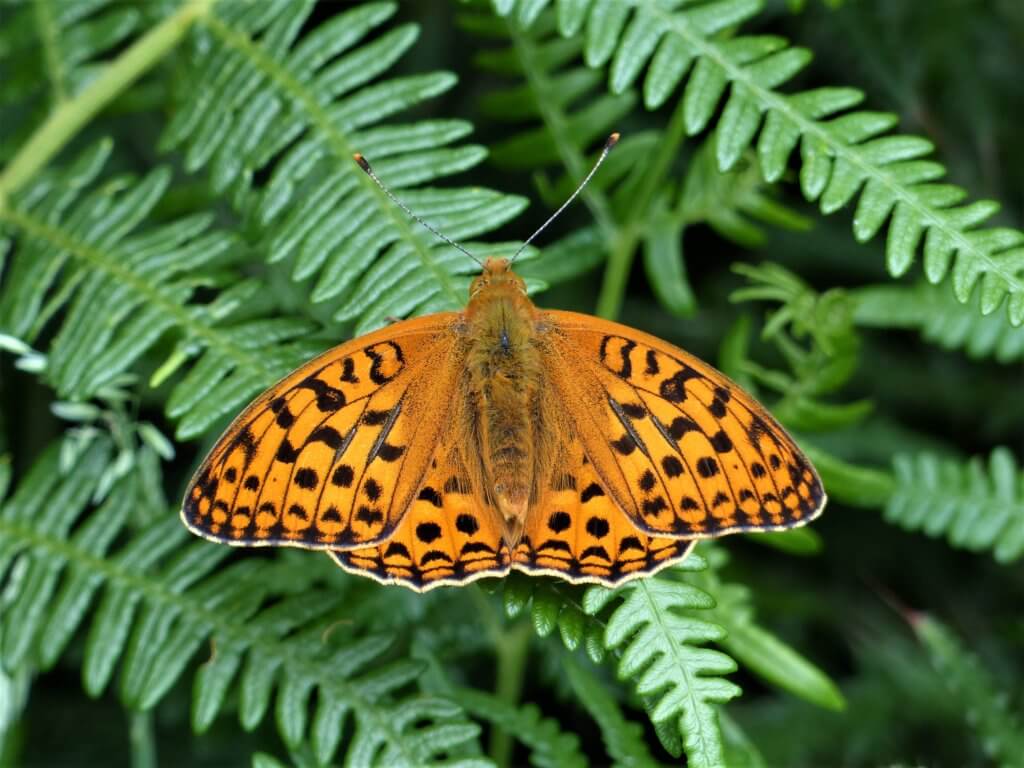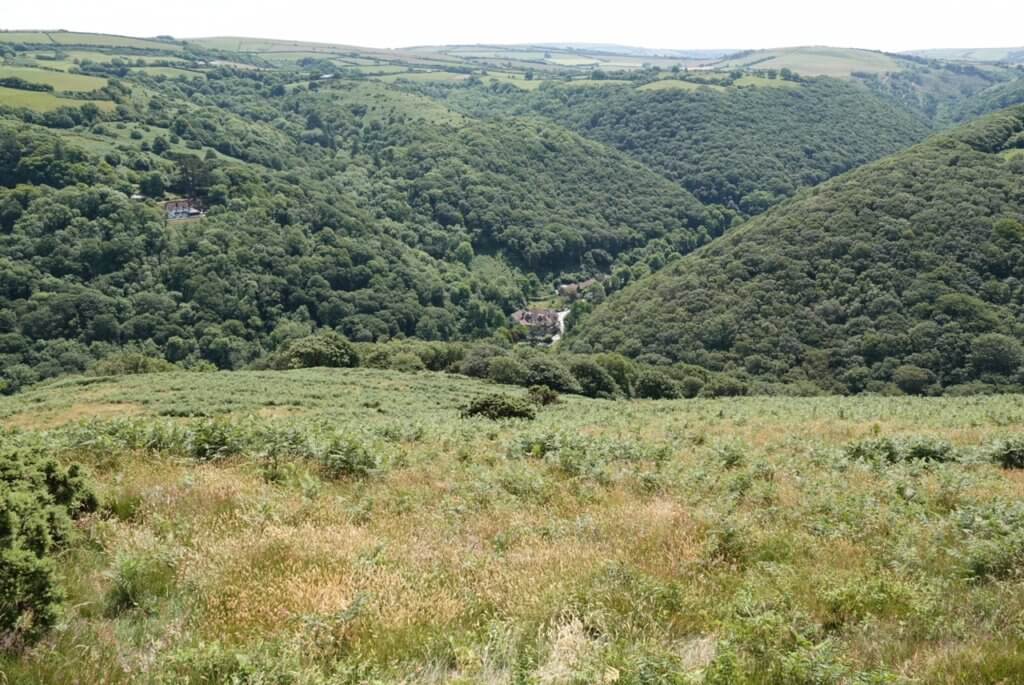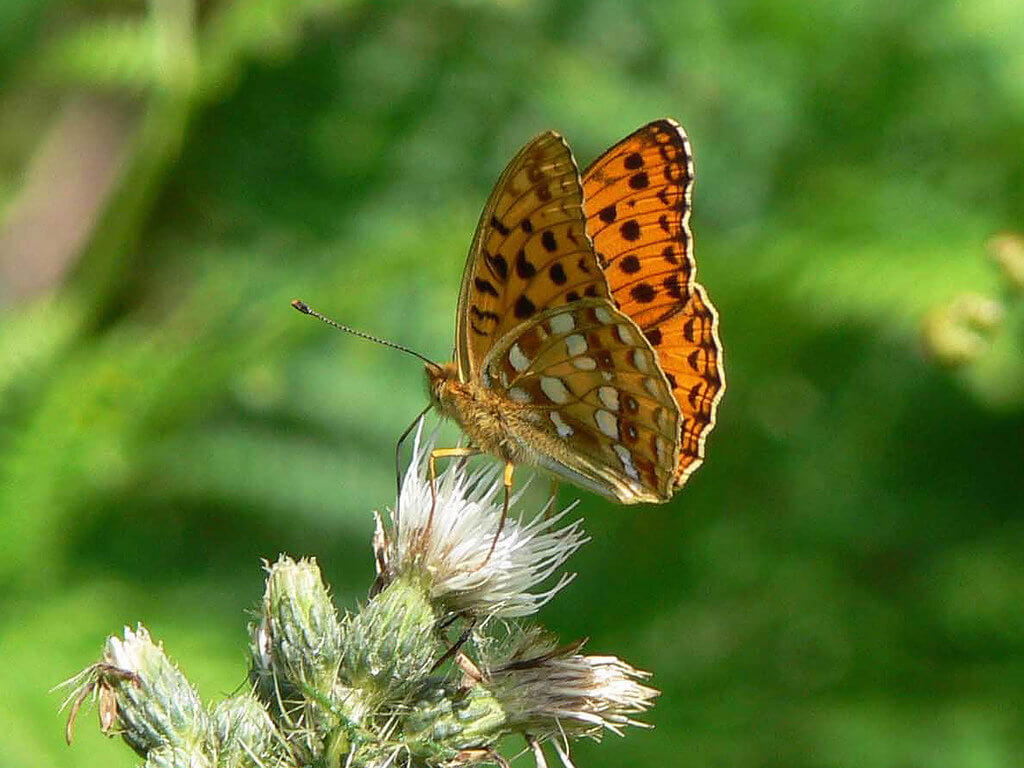Conservationists delight as endangered butterfly makes early appearance
The UK’s most endangered butterfly is making a bumper early appearance at a remote British habitat – confounding recent grim figures about its population.
The High Brown Fritillary has been recorded as being ‘out’ slightly earlier than usual and early counts reveal excellent numbers of butterflies present, due to good weather conditions.

Matthew Oates one the UK’s leading butterfly experts, and National Trust volunteer, has been in the Heddon Valley in North Devon taking part in an annual count of this rare butterfly along with the help of other volunteers.
He said: “The butterfly seems to be having a very good year with over 200 seen during the count. I’m confident the good numbers are a result of excellent habitat management and the introduction of the broad swathes, created by using the roboflail[1].
“Ideal weather conditions; a cold and harsh winter which has helped knock back the bracken and then a warm and sunny May and June have been ideal for caterpillar development.
“As we are having some fairly dry weather, it’s now the perfect time for seeing this large and powerful butterfly”, added Matthew.
The Trust is embarking on ambitious plans to develop 60 hectares of lowland heath and wood pasture – the butterfly’s principle habitat – to give it a fighting chance for the future. The project has been made possible thanks to a generous award of £100k made to the National Trust by Postcode Earth Trust, raised by players of People’s Postcode Lottery. This is part of an award of £750,000 this year towards several conservation projects and Heritage Open Days.
Over the last 50 years, the UK population of High Brown Fritillaries has declined rapidly, due to changes in woodland management and, more recently, the abandonment of marginal hill land. Butterflies, including the High Brown Fritillary, need large areas of the countryside to survive in good numbers, and their populations have struggled where these habitats have been overwhelmed by pressures from agriculture and development.
Now, climate change and nitrogen deposition from the atmosphere are almost certainly contributing to the High Brown’s demise. Overall, the UK population has declined by 66% since the 1970s.
Laura Chow, Head of Charities at People’s Postcode Lottery commented: “Considering this work only started in January it is fantastic to see that the butterfly appears to be thriving in the valley so soon. We are thrilled that players of People’s Postcode Lottery are supporting important management work in this landscape.”
The exquisite Heddon Valley, on the Exmoor coast, is one of the few remaining strongholds where the Trust, with partners including Butterfly Conservation, has been working for years to save the species from extinction.

The £100k project in North Devon will focus on restoring parts of the natural landscape along the Exmoor and North Devon coast to make it more suitable for the butterfly. Other wildlife including the Heath Fritillary, Nightjar and Dartford warbler will also benefit. High Brown Fritillaries can also be found on Dartmoor, in South Lakeland, Cumbria and at Morecambe Bay, Lancashire.
The National Trust is working with its tenants and partners especially Butterfly Conservation to reverse the alarming decline in UK wildlife, aiming to restore 25,000 hectares of wildlife-rich habitat by 2025.

I visited Aish Tor, Dartmoor, last week specifically hoping to see these brilliant butterflies. It was like walking into a vision of what Britain’s moorlands could be – a sloping hillside; woodland rising from the River Dart to meet a carpet of bracken broken by patches of bramble, gorse, and yes, heather (wow, it doesn’t go extinct without burning!). Rides had been cut through the bracken and dancing down these rides were not only High Brown, but also Dark Green, Silver-washed and Small Pearl-bordered Fritillaries. Thoroughly remarkable to see four Frit species flying at a single site. Well done Butterfly Conservation and the National Trust for reminding me that true upland conservation does exist in some places.